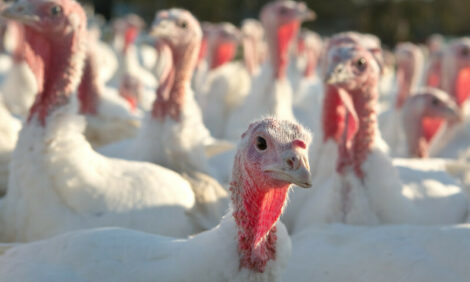



Study analyses global meat consumption trends
Australian researchers analysed consumption in 35 countries between 2000 and 2019

The study's results reveal that peak meat consumption may have been reached in several countries. However, there is also evidence of continued consumption increase in many of the emerging economy nations. The researchers said they found evidence of this when they attempted to link Gross Domestic Product (GDP) per capita to meat consumption per capita. They found a direct link between rising consumption and increased wealth in emerging economies, but no relationship in the higher income countries.
Between 2000 and 2019, there were major changes in meat consumption across the globe. In 2019, poultry was the most popular meat globally speaking, followed by pork, beef, and then sheep and goat meat.
In most of the countries studied (26 of 35), total meat consumption per capita increased significantly over time, with the most substantial increases observed in Russia, Vietnam and Peru.
According to the study, in South American countries with relatively high meat consumption in 2000, annual increases by over 1 kg per capita were observed. Countries mentioned in the study include Brazil, Argentina, Chile, and Colombia.
Overall decreases in total meat consumption were seen in six countries. The most notable reductions were seen in New Zealand and Paraguay.
The study found that global beef consumption between 2000 and 2019 dropped by 3.9% from 22.8% to 18.9%. Consumption of beef only increased in Ethiopia, Israel, Saudi Arabia, Turkey and Vietnam. There was no changed in consumption in the recorded years in China, Indonesia, Pakistan, and the UK.
Per capita pork consumption increased slightly in China and substantially in Vietnam. In total, 19 countries experienced increased pork consumption per capita, while in 7 countries consumption decreased.
In countries with decreasing trends in pork consumption per capita, the change was small in magnitude, except in Canada where a substantial decrease was recorded from 22.6 kg/capita in 2000 to 16.3 kg/capita in 2019.
The contribution of pork to world total meat consumption was lower in 2019 than in 2000 (32.6% vs. 38.6%). In Vietnam and China, pork contributed two thirds of total meat consumption per capita in 2000, but by 2019 its contribution was only half of total meat consumption. Although the report doesn't mention African swine fever as a cause, it is likely that shrinking supply was the cause of the decrease.
Per capita, the study found that poultry consumption more than doubled in 13 countries between the recorded years. Nearly all countries studied (30 of 35) increased consumption between 2000 and 2019. World poultry consumption per capita was 14.8 kg in 2019, compared with 9.8 kg in 2000.









